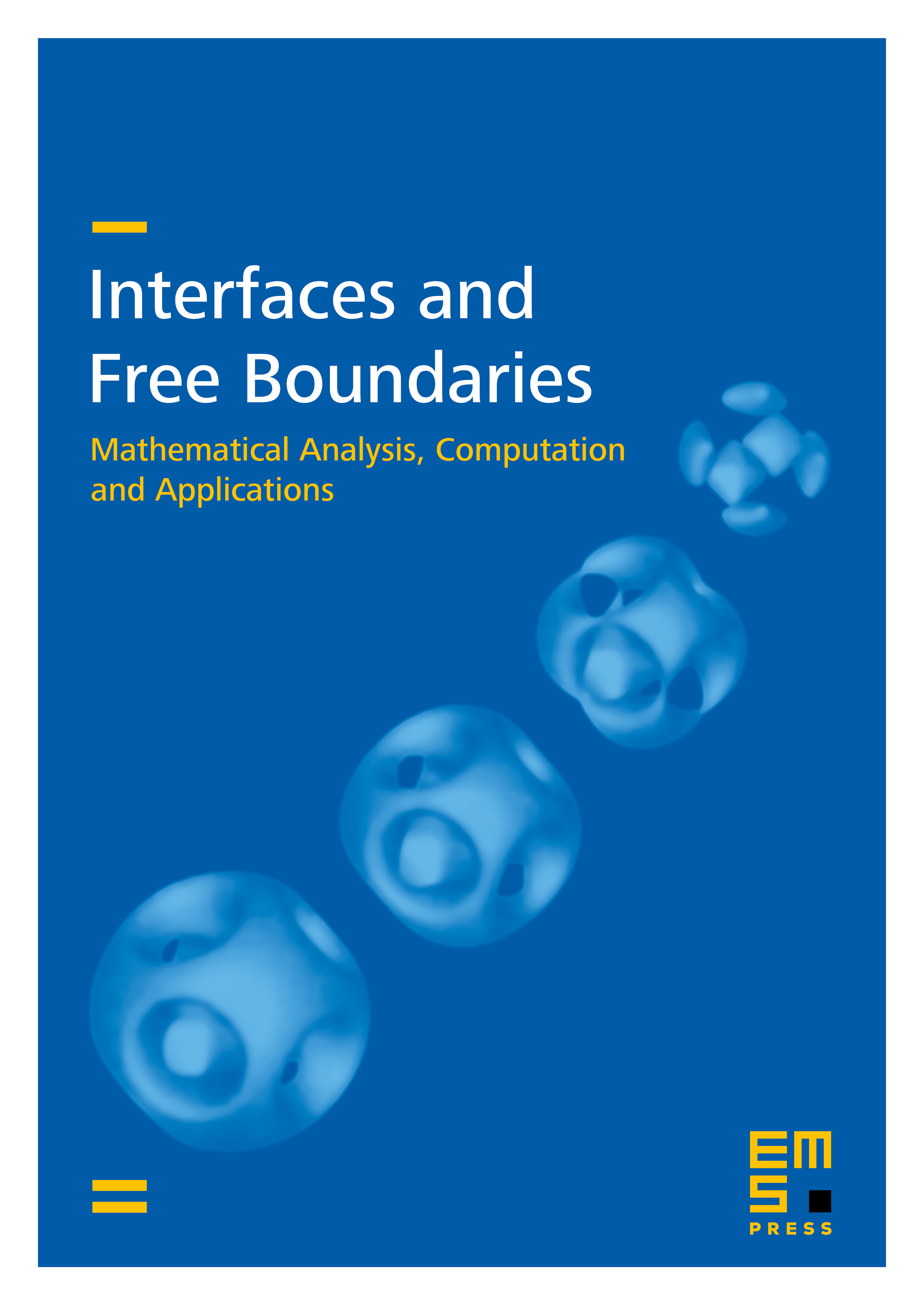Phase boundary dynamics: transitions between ordered and disordered lipid monolayers
Hans Wilhelm Alt
Universität Bonn, GermanyWolfgang Alt
Rheinische Friedrich-Wilhelms-Universität Bonn, Germany

Abstract
Based on a general thermodynamical theory of mass and momentum, we propose and investigate a new phase field model for small transition layers between two spatially separated phases with intersecting free energy functions. We use a phase fraction, that only depends on the ratio of the two density components. From the phase field model we derive conditions for the sharp interface velocity and density jumps. The general model is motivated by and applied to the dynamics of lipid monolayers, which appear as surfactant on the strongly expanded and compressed thin water film of lung alveoli. While the \emph{liquid condensed ordered phase} (LC) of a flat lipid monolayer is characterized by high viscosity and limited compressibility, the \emph{liquid expanded disordered phase} (LE) is dominated by diffusion and high compressibility. In order to perform the asymptotic transition layer analysis at moving phase boundaries, a new nonlinear free energy interpolation model is proposed whose excess energy, in comparison to standard linear interpolations, contains an energy hump that has to be surpassed in a permissive transition from one phase to the other. This leads to a unique density jump condition in the case that the ordered phase is extending, whereas in the retracting case the jump densities are not restricted. The transition profiles and the resulting interface speed are numerically determined for a typical example by solving the nonlinear degenerate ODE-system. In a simplified 1-dimensional situation with low Reynolds number, the approximative macroscopic system of differential equations with moving sharp interface is numerically solved and interpreted in application to surfactant monolayers in lung alveoli.
Cite this article
Hans Wilhelm Alt, Wolfgang Alt, Phase boundary dynamics: transitions between ordered and disordered lipid monolayers. Interfaces Free Bound. 11 (2009), no. 1, pp. 1–36
DOI 10.4171/IFB/202